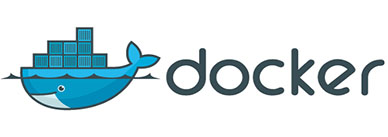How To Install Docker on AlmaLinux 9

In this tutorial, we will show you how to install Docker on AlmaLinux 9. For those of you who didn’t know, Docker is basically a container engine that uses the Linux Kernel in order to create the containers on top of an operating system. Docker provides a portable environment for both development and production environments. You can create a container from one set of files that works anywhere else without having to worry about dependencies being different on each new server.
This article assumes you have at least basic knowledge of Linux, know how to use the shell, and most importantly, you host your site on your own VPS. The installation is quite simple and assumes you are running in the root account, if not you may need to add ‘sudo‘ to the commands to get root privileges. I will show you the step-by-step installation of the Docker CE on AlmaLinux 9. You can follow the same instructions for CentOS and Rocky Linux.
Prerequisites
- A server running one of the following operating systems: AlmaLinux 9.
- It’s recommended that you use a fresh OS install to prevent any potential issues.
- SSH access to the server (or just open Terminal if you’re on a desktop).
- A
non-root sudo useror access to theroot user. We recommend acting as anon-root sudo user, however, as you can harm your system if you’re not careful when acting as the root.
Install Docker on AlmaLinux 9
Step 1. First, let’s start by ensuring your system is up-to-date.
sudo dnf clean all sudo dnf update sudo dnf groupinstall "Development Tools"
Step 2. Installing Docker on AlmaLinux 9.
By default, Docker is not available on the AlmaLinux 9 base repository. Simply add the Docker CE repository to your AlmaLinux system:
sudo dnf config-manager --add-repo=https://download.docker.com/linux/centos/docker-ce.repo
After the repository is enabled, now install the latest version of Docker CE using the below command:
sudo dnf install docker-ce --nobest
Next, start the Docker service and enable it to automatically start on boot by running the following command:
sudo systemctl enable --now docker sudo systemctl start docker sudo systemctl status docker
Confirm the installation and check the installed build version of Docker:
docker --version
Step 3. Add AlmaLinux User to Docker User Group.
This next step is optional, but if you’d prefer the ability to run Docker as your current user, add your account to the docker group with this command:
sudo usermod -aG docker $USER
Check whether your user is in the docker group or not:
id$USER
You’ll need to reboot your system for those changes to take effect:
reboot
Step 4. Test Docker by pulling Image.
Now we download some Images such as Debian to create a Container and test it, whether everything is working fine or not:
docker pull debian
Once done, let’s create and run a container using it. The command for that is very simple:
docker run -it debian
Congratulations! You have successfully installed Docker. Thanks for using this tutorial for installing the Docker CE on your AlmaLinux 9 system. For additional help or useful information, we recommend you check the official Docker website.